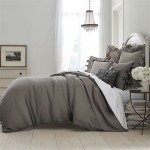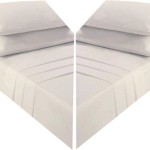Can Snakes Eat Aspen Bedding Plants?
Aspen bedding is a popular choice for reptile enclosures due to its absorbency, odor control, and natural aesthetic. However, a common question among snake owners is whether aspen bedding poses a risk if ingested by their snakes. While aspen itself isn't toxic, the potential consequences of ingestion require careful consideration and understanding.
Digestive Impaction
The primary concern with snakes ingesting aspen bedding is the risk of digestive impaction. Aspen shavings, particularly if dry or ingested in large quantities, can clump together within the snake's digestive tract. This clumping can obstruct the normal passage of food, leading to impaction. Impaction is a serious condition that can prevent the snake from properly digesting food and eliminating waste. Symptoms of impaction may include regurgitation, loss of appetite, lethargy, and abnormal stool. If left untreated, impaction can be fatal.
Several factors can increase the risk of impaction from aspen bedding. Dehydration is a significant contributor, as insufficient water intake can make it more difficult for the snake to pass the ingested bedding. Feeding live prey in an enclosure with loose substrate can also increase the likelihood of accidental ingestion, as the snake may grab bedding along with its prey. Furthermore, the size and age of the snake play a role. Smaller snakes and juveniles are more susceptible to impaction due to their narrower digestive tracts.
Preventing Aspen Ingestion
Several preventative measures can minimize the risk of aspen ingestion. Maintaining proper humidity levels within the enclosure is crucial. Adequate humidity helps keep the aspen bedding moist and less likely to become dusty or break down into small, easily ingested particles. Providing a separate feeding container or area outside the main enclosure can also help prevent accidental ingestion during feeding. This ensures the snake focuses solely on its prey and doesn't inadvertently consume bedding material.
Regular spot cleaning of the enclosure is essential for removing fecal matter, urates, and shed skin. This reduces the chances of the snake coming into contact with contaminated bedding and potentially ingesting it. Furthermore, offering appropriately sized prey items is important. Overly large prey can make it more difficult for the snake to swallow cleanly, increasing the risk of accidental bedding ingestion.
Alternatives to Aspen Bedding
While aspen can be a suitable substrate when appropriate precautions are taken, several alternative bedding options exist for snake enclosures. Cypress mulch is another popular choice, offering similar absorbency and humidity retention properties to aspen. Coconut fiber, also known as coco coir, is a sustainable and biodegradable option that retains moisture well.
Newspaper and paper towels are simple, cost-effective, and easily replaceable options, particularly suitable for quarantine enclosures or snakes with specific health needs. Reptile carpet is a reusable substrate that can be easily cleaned and disinfected. However, it's essential to ensure proper cleaning to prevent bacterial buildup. Finally, for certain species with specific humidity requirements, bioactive setups utilizing a mixture of soil, leaf litter, and other organic materials can create a more naturalistic environment, though these require more specialized care and maintenance.
Choosing the Right Substrate
The best substrate for a snake enclosure depends on the species' specific needs and the owner's preferences. Factors to consider include the snake's natural habitat, humidity requirements, and susceptibility to impaction. Researching the specific needs of the snake species is crucial for making an informed decision. Consulting with a reptile veterinarian or experienced herpetologist can offer valuable guidance on selecting the most appropriate and safe substrate.
Regular monitoring of the snake's behavior and overall health is vital, regardless of the chosen substrate. Observing for any signs of impaction, such as changes in appetite, regurgitation, or lethargy, is essential for early detection and prompt veterinary intervention. Maintaining a clean and appropriately furnished enclosure contributes significantly to the snake's well-being and reduces the risk of various health issues, including impaction.

Why Aspen Makes A Great Bedding For Pet Snakes

Aspen Snake Bedding Zoo Med Laboratories Inc

Why Aspen Is A Bad Pet Reptile Substrate Wood Shavings

Zoo Med Aspen Snake Bedding

Buy Prorep Aspen Bedding At 6 59

Aspen Snake Bedding Coburg Aquarium

Lugarti Premium Aspen Snake Bedding

Best Snake Substrate

Zoo Med Aspen Snake Bedding

7 Snake Bedding Options For Your Pet Kwik Pets








